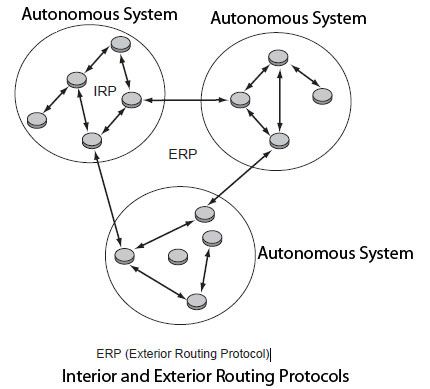An Internet environment results from the interconnection of physical networks by routers. Each router is connected directly to two or more networks, hosts are generally connected to a single network, but this is not mandatory.
There are several types of routes:
• Direct routing. This is the case if the two machines who want to communicate are attached to the same network and therefore have the same IP network number. It may be two hosts or a router and a host. It is sufficient to perform the transport of the IP packet to determine the recipient’s physical address and encapsulate the datagram in a frame before sending it over the network.
• Indirect Routing. In this case, routing is more complex because it must determine the router to which datagram’s are sent. The latter can thus be forwarded from router to router until they reach the destination host. The routing function is mainly based on the routing tables. Routing is done from the network number of the IP address of the destination host. The table contains for each network number to reach the IP address of the router to send the datagram. It may also include a default router address and direct routing indication. The difficulty comes from the routing initialization and updating of routing tables.
• The subnetting. This addressing technical and standardized routing to manage multiple physical networks from a single Internet IP address. The principle of subnetting is to divide the host number portion of an IP address subnet number and host number. Outside the site, the addresses are interpreted without taking account of subnetting, cutting being seen and treated from the inside. Redistribution number allows the host to choose freely the number of machines based on the number of networks on the site. Conceptually, the addressing techniques and routing are the same. At the physical level, we use an address mask.
The Internet has been so extensive that it had to be split into autonomous systems for easier management. Autonomous system called (AS) a set of routers and networks connected to each other, administered by an organization and exchanging packets through a same routing protocol.
The routing protocol shared by all routers in an autonomous system is called interior routing protocol, or IRP (Interior Routing Protocol). An internal protocol does not need to be implemented outside the autonomous system. Therefore, one can choose its routing algorithm to optimize the internal routing. The interiors are also called protocols IGP (Interior Gateway Protocol).
When an Internet network has multiple autonomous systems linked together, you have to use an external routing protocol, or ERP (Exterior Routing Protocol). ERP protocols must have knowledge of the various AS to accomplish their task. ERP protocols are also called EGP (Exterior Gateway Protocol).
Figure shows an example of autonomous systems with PIR protocols interconnected by an ERP.

 Dinesh Thakur holds an B.C.A, MCDBA, MCSD certifications. Dinesh authors the hugely popular
Dinesh Thakur holds an B.C.A, MCDBA, MCSD certifications. Dinesh authors the hugely popular